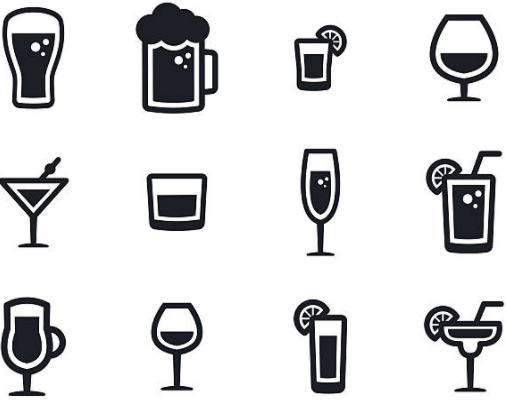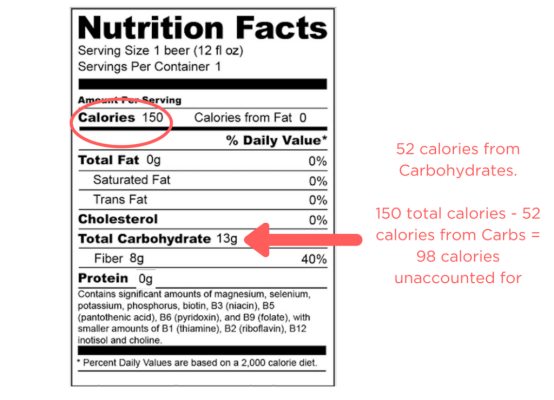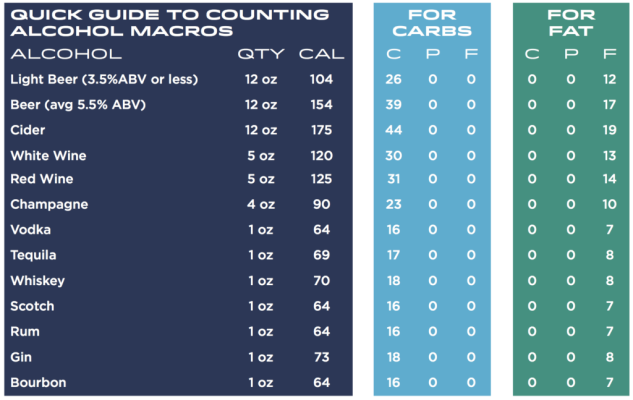Alcohol is actually it’s own macronutrient, but for our macro counting purposes, it is tracked as a carb, fat or combination of both. To calculate macronutrients for alcohol, we need to know how many calories it contains.
To find this information, you can use the nutritional information listed on the label of beverage (if there is one), our generic chart below, or you can usually find it on Google!

Use our Alcohol Calculator to calculate your drink and add it directly to your food log!
To Count Your Alcohol as a Carbohydrate:
Use the total number of calories in a drink divided by 4
Example: 5 ounces of Red Zinfandel = 132 calories 132 calories/4 = 33g Carbs
To Count Your Alcohol as a Fat:
Use the total number of calories in a drink divided by 9
Example: 5 ounces of Red Zinfandel = 132 calories 132 calories/9 = 15g Fat
To Count Your Alcohol as both a Carbohydrate and a Fat:
Use the a portion of the total number of calories in a drink divided by 4 Use the remainder of the total number of calories in a drink divided by 9
Example: 5 ounces of Red Zinfandel = 132 calories 66 calories/4 = 16.5g Carbs 66 calories/9 = 7g Fat
Why we use the formula
Alcohol is technically its own macronutrient and contains 7 calories per gram but because it isn’t essential for survival it’s not typically mentioned with the other macros: protein, fat, and carbs.
It’s important to keep in mind that alcohol has value as energy, but no nutritional value such as vitamins, minerals, or fiber. When the body senses alcohol present, it stops everything it’s doing (fat burning) and concentrates on getting the alcohol out of it’s system.
Why you won’t see a nutrition label on most alcoholic beverages
The short answer is that, alcoholic beverages aren’t regulated by the FDA, but a different federal agency called the Alcohol and Tobacco Tax and Trade Bureau (TTB). This agency doesn’t require nutritional labeling so any nutritional labeling is completely up to the company. Many alcoholic beverages actually contain a very high calorie content which is why only some alcoholic beverages like light beers boast their nutritional facts on their packaging.
Do I have to use the formula or can I rely on the nutrition label?

Always use the formula.
In the example to the right, the nutrition label states that there are 150 calories in the alcoholic beverage.
To get the calories from carbs we multiplied 13g by 4 calories (since 1g of carbs contains 4 calories) which equals 52 calories. That leaves 98 calories that are unaccounted for. These calories are coming from alcohol macros which are not required to be labeled.
If you use the formula you will account for all of the calories in the beverage.

 HOLIDAY SALE! 50% off yearly membership + EXTRA 33% off with code HOLIDAY33
HOLIDAY SALE! 50% off yearly membership + EXTRA 33% off with code HOLIDAY33 

